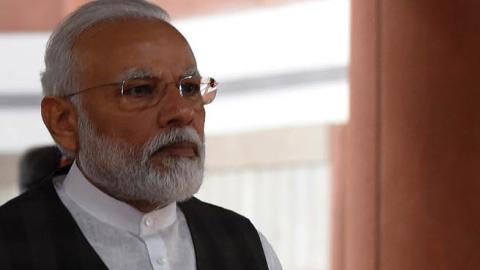The crisis unleashed by the coronavirus pandemic will almost definitely create a new global order, and India could emerge stronger. But for that, Indians will have to shed the complacency that comes from believing that the nation’s long history makes its rise inevitable.
If India wants to be seen as a serious global actor, and not just an important one because of its large population, the Narendra Modi government needs to do what major powers do.
This includes, among other things, investing in a modern military, bolstering the economy, boosting partnerships with allied democracies, and strengthening India’s democratic institutions. India requires strong leadership and decisive action, not just platitudes and appeals to populism and nationalism.
The global community has been waiting for the last two decades for India to play a bigger role in Asia and beyond.
India’s global potential
For the rest of the world, India’s promise is huge: its historical civilisation, geo-strategic location, huge labour force of 500 million people, the fourth largest military in the world, and a formidable consumer market. But Indian politicians have hesitated in matching their rhetoric about the country being a leading power with building hard power.
It is almost as if India wants to be a great power because it is entitled to be one, without doing the heavy lifting like other major powers.
Systematic development of accoutrements of global power, in terms of economic strength, military power, ability to affect global decisions and recognition by peers, has thus far not proved to be India’s strong suit. If India grows economically at 8-10 per cent, it is seen as a large consumer market for global companies. It would also have more resources to invest in military modernisation, and make India a desirable partner for countries such as Australia, Japan, the United States, and nations of the European Union.
But today’s India, which is growing economically only at 3-4 per cent, is protectionist, inward-looking, and does not have the resources to invest in defence — all of which make it an undesirable partner.
Economy matters
Just as economic growth attracts allies, it also deters rivals. It is not a coincidence that India-China relationship has had a strong trade component from 1990 onwards, when the Indian economy was liberalised and Chinese companies began to seek entry into the Indian market.
The higher India’s economic growth and investment in military and the deeper its bonds with countries like the United States and Japan are, the more Beijing is likely to woo India.
The lower India’s economic growth and the weaker its military capabilities are, the more Beijing will provoke New Delhi, as is happening right now.
Twice in the last three years, China has forced a confrontation with India on the Line of Actual Control (LAC) with the intention of changing the ground realities.
For now, India needs to stand its ground, and push back along the border at points where China is on the back foot.
In the long-run, New Delhi needs to focus on economic growth and gathering resources to boost its border infrastructure.
India also needs to bolster its maritime capabilities in the Indian Ocean region, to send a strong message to China.
Hit by slow growth
India’s progress on the economic front has been problematic. Economic growth has slowed down from 8.5 per cent in 2010-11 to around 4.5 per cent before Covid-19 hit in February 2020.
The economic slowdown started in 2016, long before the Covid-19 pandemic, with the double shock of demonetisation and implementation of a nationwide Goods and Services Tax (GST).
This hit large sectors of the economy, leading companies to scale back investments, lay off workers, and adopt a wait-and-watch approach.
Most analysts believe that Covid-19 will lead to further decline in India’s GDP growth, down to 1.5 per cent in 2020-21, while some are even anticipating a negative growth.
The Modi government’s response to the widespread economic distress has been sporadic and insufficient to ensure long-term recovery.
Long road ahead
There are many, both in the Modi government and outside of it, who argue that India will bounce back once the government eases the drastic lockdown it imposed as a response to the coronavirus pandemic.
Many economists and international agencies, however, disagree. All three international credit rating agencies, Moody’s and Standard & Poor’s ( S&P ) and Fitch, recently downgraded India to the lowest investment grade.
Furthermore, these agencies echo what many economists have been arguing for some years now, that ever since the 2016 economic slowdown, the Modi government has not implemented economic reforms. They argue that there has been sustained low economic growth, rising stress on India’s financial sector, and “significant deterioration in the fiscal position of governments”.
To appeal to neighbours, counter rivals, and bolster alliances, India needs to be economically strong with a rising GDP and a skilled labour force, while welcoming foreign investment and less government regulations.
Read in The Print



















